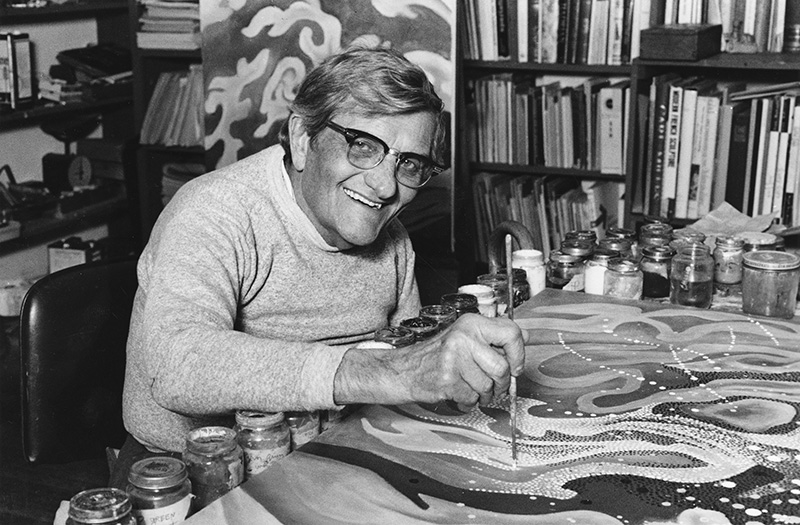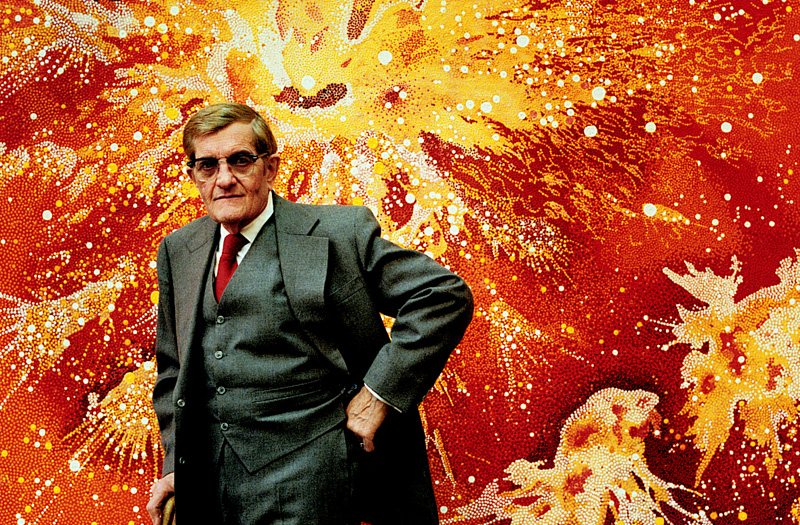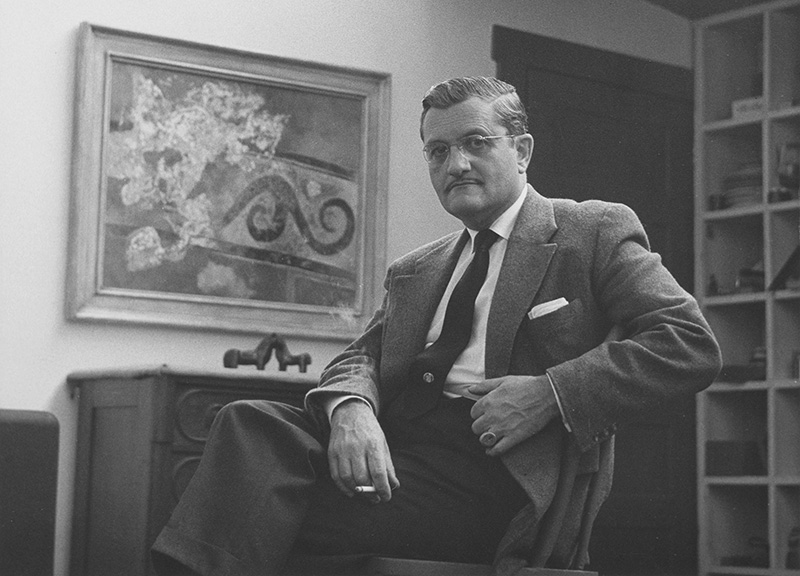Vance Kirkland (1904–1981) was among the most important Colorado and regional painters of the 20th century. He was born November 3rd in Convoy, Ohio, a small country town west of Cleveland, near the Indiana border. Kirkland studied at the Cleveland School of Art, receiving a Diploma Degree of Painting (1927) and a Bachelor of Education in Art (BEA, 1928), continuing a second year of studies in art history and art education at the Cleveland School of Education and Western Reserve University (1926–1928). Kirkland married Anne Fox Oliphant in 1941 and enjoyed traveling and entertaining with her.
In addition to his 55-year career as an innovative and successful painter, he was a remarkable educator and collector. Kirkland came to Denver in January, 1929 as the Founding Director of the current School of Art at the University of Denver (DU) at Chappell House. Aside from his influence as a professor, Kirkland was active in the local art community and worked to establish the Modern Art movement in Denver, where he lived for the rest of his life. He left DU in 1932 to establish the Kirkland School of Art (1932–1946) at 13th Avenue & Pearl Street. The Kirkland School of Art was highly successful, and in 1946 DU enticed Kirkland to return as director of its school of art until his retirement in 1969. He continued to paint in his studio building until his death in 1981.
Summary of Painting Career
Vance Kirkland was an inventive, visionary painter based in Denver, Colorado, from 1929 until his death in 1981.
Vance Kirkland developed 5 major painting periods and at least 35 series, carried out in about 1,200 paintings during his life. Kirkland’s 5 major periods are: Designed Realism, Surrealism, Hard Edge Abstraction, Abstract Expressionism and the Dot Paintings. According to various museum directors and curators, Kirkland bequeathed to the art world something significant in each of his 5 painting periods.


Kirkland invented three unique textures for his paintings over a number of years: (1) mixtures of watercolor and denatured alcohol; (2) mixtures of oil paint and water; (3) dots of oil paint applied with wooden dowels, mostly placed over the oil paint and water manipulations. Kirkland kept the formulas secret until three years before his death, when he revealed the latter two techniques in an interview for a catalog. About a week before his death, he told his friend Hugh Grant about the denatured alcohol and watercolor technique.
Kirkland’s unique oil paint and water mixtures become fictitious nebulae; surrealist worlds unfold with deadwood creatures and fantastical plants from the Rocky Mountains; dot paintings coalesce as imaginary galaxies; Colorado’s ghost towns and dramatic mountain scenes are frozen in time; pure abstractions are created from Kirkland’s Synesthesia, meaning—in Kirkland’s case—an ability to sense color from listening to music.
From 1954 until his death in 1981, most of Kirkland’s paintings are concerned with the mysteries and energy of the cosmos. The Director of the Museum of Modern Art in Vienna, Austria, Lóránd Hegyi, discussed these paintings: “…in his later work, he developed a visionary art which mystically empathized with the entire universe, gave cosmic universality visual form in explosive images and used panel painting to convey the perpetually changing state of the universe.”3

Dianne Perry Vanderlip, Curator, Modern and Contemporary Art, Denver Art Museum, knew Kirkland during the last three years of his life and was co-curator of Kirkland’s FIFTY YEARS retrospective in 1978. She noted: “…each of these periods, of course, has been tied together with a primary interest of communicating the human spirit’s adventure through time. Obviously, though he titles these paintings with space age titles—Nebula Near Saturn and that kind of thing—these are not science fiction paintings; these are paintings about the adventure of the human spirit.”3
Listen to a podcast of Hugh Grant on Colorado Public Radio’s “Colorado Matters” (33 mins)
Endnotes
1Hugh A. Grant, “Mysteries in Space: Discussions with Vance Kirkland,” in Vance Kirkland MYSTERIES IN SPACE (New York: Genesis Galleries Ltd., 1978), pages 65 and 67 (quoting from a private 1977 interview of Kirkland by Hugh Grant, published in this 1978 catalog for the first time).
2Dr. Lóránd Hegyi, Vance Kirkland Paintings (Valencia, Spain: Sala Parpalló, Centre Cultural La Beneficència, 1999), page 65. Dr. Lóránd Hegyi was Director of the Museum of Modern Art, Vienna from 1990 to 2001, at the time of the quote.
3Emmerich Oross, Producer & Director; Dianne Perry Vanderlip speaking in Vance Kirkland’s Visual Language, an hour television documentary for PBS stations (Denver, CO: KRMA-TV, Denver [now Rocky Mountain PBS], 1994), DVD. Dianne Perry Vanderlip served as Curator of Modern and Contemporary Art at the Denver Art Museum from 1978 to 2007.
